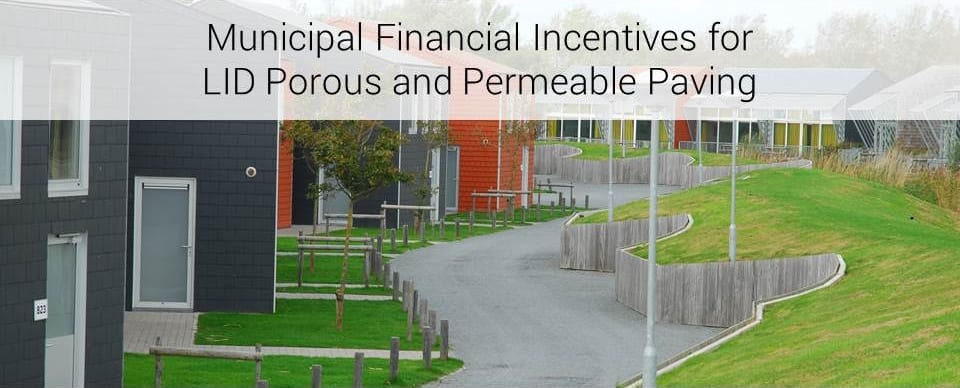Municipal Tax Incentives for LID Porous and Permeable Paving

The increasing focus on climate change has more people looking to green infrastructure and LID alternatives as a way to manage storm water on site and reduce the damaging and often costly effects of runoff. In Canada, LID and porous paving has been embraced positively and the Canadian government is recognizing its importance. Many municipalities are now offering grants and financial incentives towards LID, green infrastructure and permeable paving. In Canada, there are grants available on both the national and provincial level. It is quickly becoming widely accepted that when storm water management alternatives are used, we all benefit!
Benefits of Ecoraster
Although storm water management has been fully embraced as the norm in Europe for almost three decades, it is only just now increasing in importance throughout North America.
We are truly living in changing times, especially as it relates to green building and sustainability.
We have already seen infrastructure such as green roofs become accepted and included throughout Toronto and metropolitan areas of Canada and the U.S.
Products that reduce greenhouse gases, carbon emissions, and energy consumption are widely incorporated for sustainability reasons even if the initial cost is higher than traditional choices.
Builders, developers and corporations are looking to include green building practices such as lighting, windows, walls, and insulation, that will benefit the environment, demonstrate sustainability and work towards leaving the earth healthy for generations to come.
Storm water management is the next related area towards which the focus is moving.
There are many ways to manage storm water, rain gardens and bioswales, infiltration ponds and trenches and porous paving are all well known coping strategies for storm water management.
It is tremendously important to ensure the success and adoption of new strategies, that new technologies are as easy and affordable to incorporate as possible. Thus said, the Ecoraster porous paving system is one such solution.
Permeable paving systems such as Ecoraster are also a way to use land in a cost-efficient manner by allowing parking and driving on areas that are also infiltration areas.
Changing times mean changing guidelines and requirements on a government level.
There are currently new standards being designed focusing on storm water management, LID and green infrastructure. The new guidelines will require certain amounts of storm water to now be managed on site for both new builds and retrofits of existing areas. The goal is to reduce the volume of run off leaving solid surfaces and entering the sewer systems and natural water bodies with the hope that it will lead to reduced flooding and will lessen the burden on the existing municipal infrastructure which is often aging and unable to support the increased volumes of run off caused by the growing population.
Strategies such as rain gardens and bioswales are gaining popularity throughout community areas such as schools, residential areas and boulevards. The addition of the green space is greatly welcomed and embraced and often designed to include areas promoting butterflies, bees and birds. The construction of rain gardens have became school projects allowing for a wonderful educational opportunity by not only including the students in the “building” phase but also using the rain gardens as educational areas throughout the year.
Porous paving alternatives are also a way in which storm water can be effectively and efficiently managed on site.
How does it work?
The concept behind permeable paving is that the base beneath the paving system is constructed in such a manner to allow storm water to be collect and stored beneath the surface holding it until it can either infiltrated the ground recharging the aquifers and ground water stores and/or evaporate.
The rain water enters the permeable paving surface either directly through the surface or through the joints, as with unit interlocking paving stones.
Ecoraster, by design, is one of the best options available for permeable ground reinforcement due to the fact it is more than 95% open. The Ecoraster grid system allows for almost immediate infiltration of rain water through the surface and into the ground. The fill of the grid cells will not get compacted or need any type of regular maintenance to retain the porosity. The surface can be constructed to hold as much storm water in the base as needed. However, if only minimal storage is required, the Ecoraster system itself can often hold the required amount minimizing the depth of base needed.
Ecoraster parking and driving areas are often used as infiltration areas for the larger surrounding areas such as townhouse complexes and shopping areas.
Many municipalities are now offering grants and financial incentives towards LID, green infrastructure and permeable paving. In Canada, there are grants available on both the national and provincial level. It is quickly becoming widely accepted that when storm water management alternatives are used, we all benefit!




